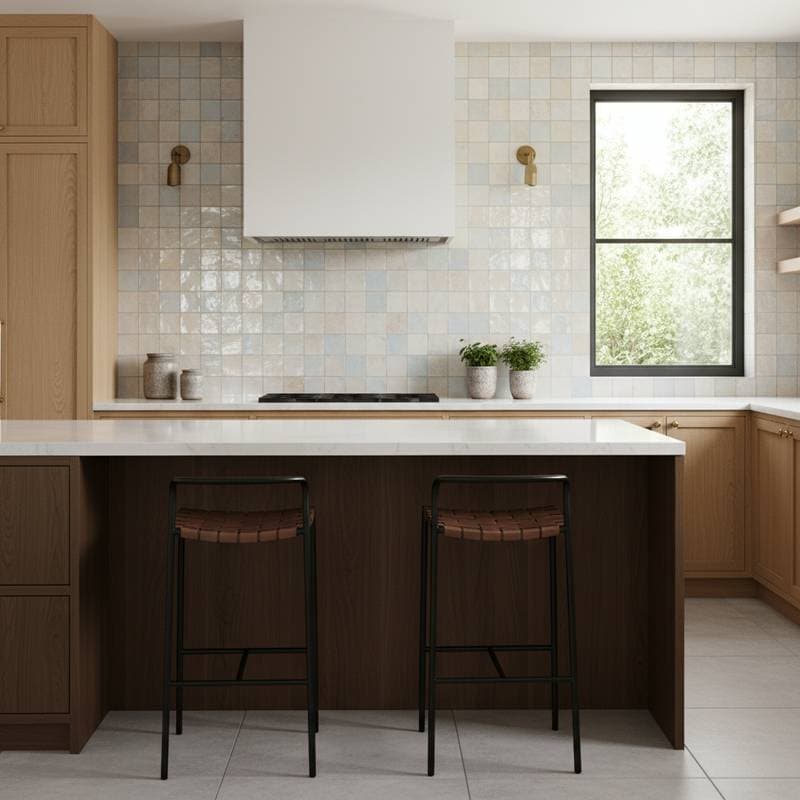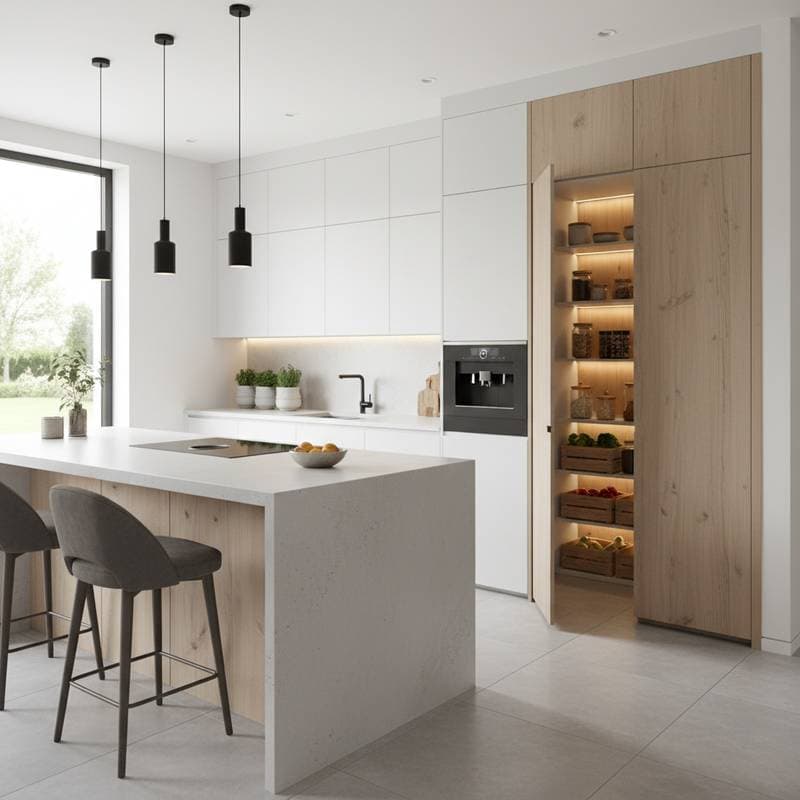How Zellige Tiles Elevate Kitchen Value by 6 Percent
Handmade Moroccan Zellige tiles feature glossy, irregular surfaces crafted from clay. These tiles reflect light in unique patterns, creating depth and texture on walls. Homeowners often install them on backsplashes, accent walls, or kitchen islands to introduce character. Such additions provide a customized appearance without requiring a complete kitchen overhaul.
Cost Breakdown
The national average for installed Zellige tiles ranges from $25 to $70 per square foot. For a standard backsplash project, expect costs between $1,500 and $3,800. Larger or custom designs may exceed $5,000.
Several factors influence the final price:
- Variations in tile size and color uniformity
- Origin and quality of the handmade craftsmanship
- Complexity of the layout and grout spacing
- Regional labor rates
- Necessary preparation on existing surfaces
Advantages and Drawbacks
Advantages
- Enhances resale appeal through intricate handcrafted elements
- Reflective glaze illuminates compact kitchen areas
- Versatile design complements both contemporary and classic aesthetics
- Long-lasting performance when properly sealed
Drawbacks
- Elevated expenses for materials and professional installation
- Subtle tile differences extend the layout process
- Glaze surface prone to chipping from impacts like cookware
- Essential sealing required to prevent staining
Varieties of Zellige Tiles
Traditional Zellige
These consist of square or rectangular shapes, hand-cut and glazed on one face. They deliver an authentic Moroccan aesthetic ideal for cultural-inspired kitchens.
Polished Zellige
A smoother finish maximizes light reflection. This option suits well-lit kitchens where brightness enhances the overall ambiance.
Unglazed Zellige
The matte texture offers a natural, subdued hue that demands thorough sealing. It aligns with rustic or organic design themes.
Mosaic Zellige
Composed of small fragments arranged in intricate patterns, this type serves as accents or focal points in artistic installations.
Installation: DIY or Professional?
Installing Zellige tiles presents significant challenges due to variations in thickness and shape. Surfaces must remain perfectly flat and free of debris. While individuals might manage preparation and sealing, achieving precise tile placement requires skilled hands.
DIY Approach
- Duration: Two to four days for a modest backsplash
- Required tools: Tile cutter, spirit level, notched trowel, spacers, and sealer
- Potential issues: Crooked alignments, fractured tiles, and grout residue buildup
When to Engage a Professional
Opt for expert assistance to ensure flawless alignment and narrow grout lines. Professionals handle complexities around electrical outlets, corners, or surface repairs effectively.
Essential Installation Steps
- Measure the area and draw precise layout guidelines.
- Thoroughly clean and level the wall substrate.
- Spread thin-set mortar evenly using a notched trowel.
- Position tiles firmly, maintaining consistent small gaps.
- Accommodate size discrepancies during placement.
- Permit the mortar to set completely.
- Fill joints with grout applied judiciously.
- Remove surplus grout using a moist sponge.
- Seal both tiles and grout after full drying.
Care Instructions and Durability
Properly sealed and maintained Zellige tiles endure for decades. In frequent-use kitchens, reapply sealant every two to three years. Address spills promptly to minimize stain risks. Clean with a solution of mild soap and water. Steer clear of abrasive chemicals or acidic products that may erode the glaze.
Comparable Options
- Subway Tile: More affordable and uniform, with simpler installation, yet missing the artisanal uniqueness.
- Porcelain Tile: Offers robustness and minimal upkeep, though it conveys less inviting warmth.
- Glass Tile: Provides shine and simplicity, but emphasizes grout visibility.
- Terracotta Tile: Delivers grounded, cozy tones, requiring regular sealing due to porosity.
Regional Considerations
In humid or coastal environments, prioritize moisture barriers such as waterproof backer boards prior to tiling. Urban locations with premium labor charges elevate overall expenses. Areas influenced by prominent design movements may see heightened resale premiums for Zellige due to targeted buyer interest.
Return on Investment and Market Impact
Market analysis indicates that kitchens featuring handmade tile elements, like Zellige, command approximately 6 percent higher resale values than comparable setups lacking such details. The evident artisanal quality conveys superior construction standards. Even a targeted backsplash enhancement often recoups a substantial portion of its investment upon sale.
Safety Precautions
Wear safety goggles during tile cutting to protect against fragments. Disconnect power sources to nearby outlets before accessing or modifying them. Maintain adequate airflow when applying adhesives or sealants. Adhere to municipal building codes regarding backsplash elevations behind cooking appliances.
Implementing Your Zellige Project
Sketch the intended layout before purchasing materials, and acquire at least 10 percent additional tiles to account for potential damage. Examine physical samples to verify color consistency across batches. Select a tile installer experienced with irregular handmade products. Verify local regulations for permits involving surface removals or electrical modifications. Thoughtful preparation ensures Zellige imparts enduring enhancement and unique character to your kitchen space.












